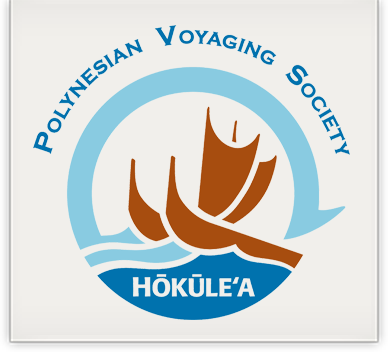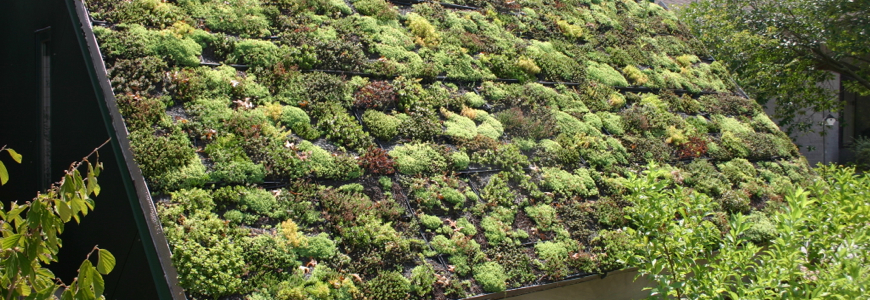Solutions for Sustainability; ‘Ike Ku’una No Ke Aohou
Solutions for Sustainability; ‘Ike Ku’una No Ke Aohou
Grades 11-12
Developed by Kimberlee Stuart, Kapaʻa High
Please click here to contact the teacher
Thank you for checking out our curriculum. We would love to hear your feedback. Please click here to post your comments on our Mālama Honua Google+ community.
In this unit students learn from both indigenous knowledge and scientific inquiry to gain a deep understanding about the environment, and then apply this knowledge in engineering solutions for environmental problems. Students first investigate indigenous knowledge and methods for living harmoniously with the environment. ‘Ike Ku’una No Ke Aohou literally means traditional knowledge for modern times. Students will then build on this knowledge by using environmental science methodologies to gain new understandings. In the culminating project students use the engineering process to build or refine a ‘green’ technology that enhances environmental sustainability.
How can an understanding of indigenous knowledge be integrated with new scientific findings to engineer new technologies for sustainable living?
Next Generation Science Standards, Common Core English and Math Standards. HS-ESS3-1 Construct an explanation based on evidence for how the availability of natural resources, occurrence of natural hazards, and changes in climate have influenced human activity HS-ETS1-2 Design a solution to a complex real-world problem by breaking it down into smaller, more manageable problems that can be solved through engineering. Language Arts: Core Curriculum CC.11-12.SL.4 Presentation of Knowledge and Ideas: Present information, findings, and supporting evidence, conveying a clear and distinct perspective, such that listeners can follow the line of reasoning, alternative or opposing perspectives are addressed, and the organization, development, substance, and style are appropriate to purpose, audience, and a range or formal and informal tasks. Math: Core Curriculum CC.Math.HSS-IC.B.6 Evaluate reports based on data. (See Also HS-LS2-2) Nā Honua Mauli Ola (NHMO) Cultural Pathways: ʻIke Pilina – Relationship Pathway ʻIke Mauli Lāhui: Cultural Identity Pathway ʻIke Honua – Sense of Place Pathway Values: kuleana (responsibility) and laulima (working together)
Building/Activating the Background 1. Students research and investigate a tool or technology used in indigenous culture. Examples could be an outrigger canoe, a weaving or lashing technique, a planting or fishing technique, etc. Strategies should include interviews of elders or experts in the field of interest. Students will gain a basic understanding of the use of this tool or technology and how it interfaces with the natural world around them. 2. Students gather data and make observations about their environment through the use of their five senses, probe ware, and other technologies. Examples could include measuring water quality (turbidity, dissolved oxygen, pH, etc.), air quality, plant growth, etc. Deepening the Understanding 3. Students will analyze qualitative and quantitative data to answer a question or draw a conclusion about the environment. Examples include using comparative statistics, for instance change in turbidity of ocean water in different weather, ability of one canoe design over the other for handling large ocean swells, etc. A further example would be to use data gathered from the WWV to compare to local conditions. Applying the Learning 4. Students will use the engineering process* to derive or refine a tool or technology that will increase personal, school, or community sustainability. This technological solution should reduce the impact of human activities on local natural systems. Examples could include making a public solar water heater for a beach shower, a wind powered lighting system for a bus stop, recycling materials to make raised bed gardens for an apartment complex, etc. *See NASA or several other sites for details regarding the engineering process:
Students will share their scientific analysis and engineering prototypes with their class, and other students via a website, and with the community via science and engineering fair, and/or ‘science nights’ at our school. Students will choose which projects, findings, or prototypes would best be used to implement either on the school campus or in the community. (ex. Solar water heaters for the beach lua, vertical gardening for small spaces using grey water, plastic digesters, electric generators on exercise equipment, Repurposed solid waste method, etc.)
Scientific reports, mathematical analysis, argumentative writing, public presentations and displays, teaching younger children, artistic representations, peer evaluation of engineering design, engineering prototypes and reports, etc.
ecosystems of different scales. Evaluate reports based on data. (These have been placed together because students will do both, in gathering and analyzing data) Rubric – Summative Assessment for Culminating Project
Materials tbd
Science: Next Generation Science StandardsHS-LS2-2Use mathematical representations to support and revise explanations based onevidence about factors affecting biodiversity and populations in ecosystems ofdifferent scales.
HS-LS2-7Design, evaluate, and refine a solution for reducing the impacts of humanactivities on the environment and biodiversity. HS-ESS3-4.Evaluate or refine a technological solution that reduces impacts of human activities on natural systems.
Standard Benchmarks
Skills
Concepts
Assessment
HS-ESS3-4.Evaluate or refine a technological solution that reduces impacts of human activities onnatural systems
Research, investigate, gather data, analysis (of efficiency of indigenous engineering as well as scientific understandings).Drawing conclusions.Oral Presentation skills re: findings on indigenous knowledge and practices)Group cooperation
Scientific knowledge and Engineering practices of indigenous people allowed, largely, for ecological sustainability.
Graphic organizer of various indigenous practicesPresentation criteria from rubricWritten reflection
HS-ESS3-1Construct an explanation based on evidence for how the availability of natural resources, occurrenceof natural hazards, and changes in climate have influenced human activityHS-LS2-2Use mathematical representations to support and revise explanations based on evidence about factors affecting biodiversity and populations in
Gather environmental data using scientific measurementsAnalyze quantitative data using statistics (Statistical analysis)Draw conclusions based on analysisUse scientific inquiry skillsOral Presentation
Quantitative and qualitative data can be analyzed using science and math. Findings can be used to derive conclusions or explanations of regarding environmental conditions.
Laboratory report including statistical analysis and conclusions.Sharing of findings.
HS-ESS3-4.Evaluate or refine a technological solution that reduces impacts of human activities onnatural systems.
Evaluate efficiency of wind and solar energy generators and refine these to improve efficiency.
Technology/tools are continually improved, through the engineering process, for better use/efficiency.
Engineering contests.
HS-ETS1-2Design a solution to a complex real-world problem by breaking it down into smaller, more manageable problems that can be solved through engineering.
Synthesis (of previous unit concepts) of past scientific & engineering practices, and present evidence and data.Inquiry skills.Engineering skills.
Technology is the use of (scientifically derived) knowledge to design tools to make life better. A poi pounder is an example.Engineering practices can be used to design or improve technologies.Engineering and technology can be used to solve problems or to alleviate impacts from anthropogenic problems.
Efficiency and other tests of engineered or improved technologies.
CC.11-12.SL.4 Presentation of Knowledge and Ideas: Present information, findings, and supporting evidence, conveying a clear and distinct perspective, such that listeners can follow the line of reasoning, alternative or opposing perspectives are addressed, and the organization, development, substance, and style are appropriate to purpose, audience, and a range or formal and informal tasks.
Scientific research.Non fiction writingOral presentation
Science is a ‘way of knowing’ that involves a process in solving problems, and most importantly, using evidence to support conclusions. Peer review, repetition of procedures, and rigorous attention to scientific protocols are important in portraying these findings.
Presentation to the class on findings that reflects research, methodology and analysis.
Standard Benchmark. GLOs, or Nā Honua Mauli Ola
BelowPoints_______
ApproachingPoints______
MeetsPoints______
ExceedsPoints_____
HS-LS2-2Use mathematical representations to support and revise explanations based on evidence about factorsaffecting biodiversity and populations in ecosystems of different scales.
Did not tie mathematical representations to explain how indigenous technologies affected populations in the ahupua’a.
Use mathematical representations to accurately explain how indigenous technologies affected two populations in the ahupua’a.
Use detailed mathematical representations to accurately explain how indigenous technologies affected two populations in the ahupua’a.
Use detailed mathematical representations to accurately explain how indigenous technologies affected numerous populations in the ahupua’a.
CC.Math.HSS-IC.B.6Evaluate reports based on data.
Data set is too small. Methodology is incomplete. No statistics have been used to analyze or evaluate data.
Poor methodology has lead to inaccurate data.Mathematical analysis is indicates 1-2 errors. Data set is too small.
Methodology is slightly lacking. 1-2 variables were not kept accurate. Math is sound but subsequent analysis is weak.
Conclusions are based on statistical analysis of data and are tightly bound to findings. Methodology is sound.
HS-ESS3-1Construct an explanation based on evidence for how the availability of natural resources, occurrenceof natural hazards, and changes in climate have influenced human activity
Little or no quantitative or qualitative data to analyze or draw conclusions about current anthropogenic causes to changes in the environment.
Inconclusive analysis of quantitative and qualitative data about current anthropogenic causes to changes in the environment.
Analyze some quantitative and qualitative data to draw an accurate conclusion about current anthropogenic causes to changes in the environment.
Analyze significant quantitative and qualitative data to draw accurate conclusions about current anthropogenic causes to changes in the environment.
HS-ESS3-4.Evaluate or refine a technological solution that reduces impacts of human activities onnatural systems.
Use math or science to partially evaluate a technological solution that reduces impacts of human activities on natural systems.
Use math and science to partially evaluate a technological solution that reduces impacts of human activities on natural systems.
Use math and science to partially evaluate or refine a technological solution that reduces impacts of human activities on natural systems.
Use math and science to thoroughly evaluate and refine a technological solution that reduces impacts of human activities on natural systems.
HS-ETS1-2Design a solution to a complex real-world problem by breaking it down into smaller, more manageable problems that can be solved through engineering.
Partially design a solution to an anthropogenic environmental problem by drawing a somewhat efficient technology that reduces this problem.
Partially design a solution to an anthropogenic environmental problem by engineering a somewhat efficient technology that reduces this problem.
Design a solution to an anthropogenic environmental problem by engineering a somewhat efficient technology that reduces this problem.
Design a solution to an anthropogenic environmental problem by engineering an efficient technology that reduces this problem.


